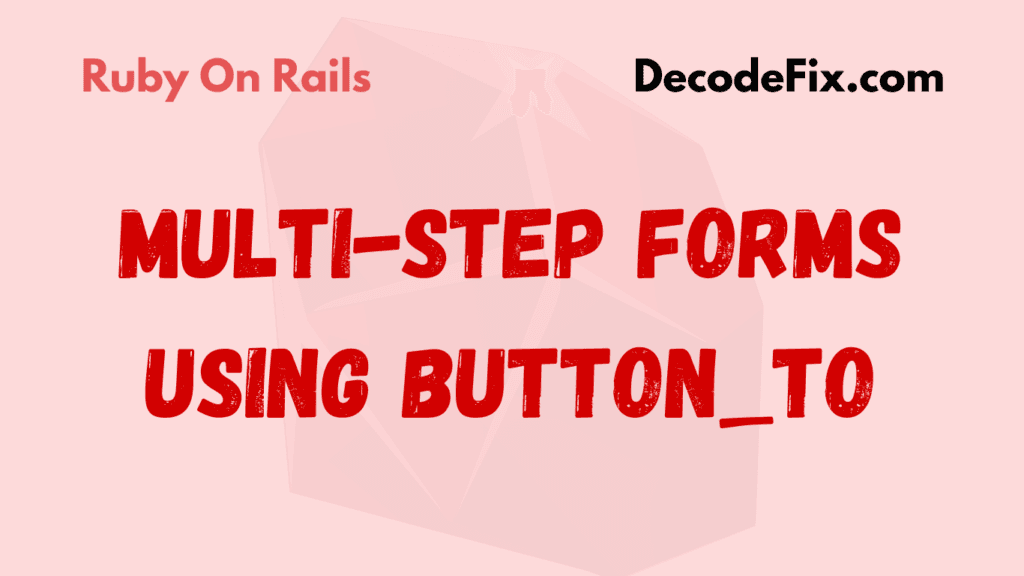Ruby on Rails has consistently evolved, offering new features that make development simpler, more elegant, and more powerful. One such feature, enum, continues to be a favorite among Rails developers, and Rails 7 takes it to another level.
That’s what happened when I first encountered enum: I was really impressed by the degree to which it simplified dealing with state-based logic in models. You might be wondering what exactly enum is and why you should use it in Ruby on Rails 7. Well, let’s dig deep but not too deep to uncover all the secrets of this truly small feature that would prove incredibly useful.
What Is an enum?
At its core, enum is a macro that helps define a set of possible values for a field in your model. These values are mapped to integers behind the scenes. It’s often used for fields like statuses or roles, where an attribute can take on one of a limited number of values.
In Rails, enums allow you to assign human-readable labels to integers stored in your database. This ensures better readability in your code while maintaining efficiency at the database level. Rails 7 maintains this functionality while adding a few improvements to make it even more developer-friendly.
A Simple Example
Here’s a quick example to demonstrate how enums work in Rails 7. Imagine you’re building a blog platform (maybe your next big project!), and each post can have a status: draft, published, or archived. Instead of using strings or numbers directly, you can use an enum to map these statuses:
class Post < ApplicationRecord
enum status: { draft: 0, published: 1, archived: 2 }
endThat’s it! Now, instead of manually managing status numbers, you can reference them directly by name in your code.
How Rails 7 Makes enum Even Better
While enums have been around for a while, Rails 7 has further enhanced them by improving performance and flexibility. Rails 7 makes working with enums even smoother. You still get all the great benefits from earlier versions—such as better code readability and easier maintenance—but now with some added bells and whistles, particularly around query building and validation.
Why Use enum?
Enums offer several significant benefits that make them a natural choice for handling state-based logic.
- Readability: By assigning names to integer values, your code is cleaner and easier to understand.
- Database Efficiency: Since the values are stored as integers in the database, querying enums is faster and more efficient than storing them as strings.
- Error Prevention: Using enums prevents errors by limiting possible values for a field. This guarantees that a field can only take on the predefined values, making your data more predictable.
Practical Use Cases for enum in Rails 7
The possibilities for using enums are nearly endless. Whether you’re building a blog, an e-commerce platform, or a task management tool, you can find opportunities to use enums to simplify your code.
Here are some practical use cases where enums make a difference:
- User Roles: Suppose you’re building a system where users can have different roles, such as admin, editor, or viewer. Instead of creating a separate roles table or using strings, enums allow you to define these roles in a simple, maintainable way:
class User < ApplicationRecord
enum role: { admin: 0, editor: 1, viewer: 2 }
endNow, you can easily check a user’s role:
user.admin?
user.editor?- Order Statuses: For e-commerce applications, tracking the status of an order is critical. By using an enum, you can simplify the logic around status transitions.
class Order < ApplicationRecord
enum status: { pending: 0, shipped: 1, delivered: 2, canceled: 3 }
end- Task Priority: In project management apps, enums can be used to define task priorities:
class Task < ApplicationRecord
enum priority: { low: 0, medium: 1, high: 2 }
endWith this setup, you can easily filter tasks by priority:
Task.highWorking with Enums in Rails 7
Let’s dive into more of the nuts and bolts of how to work with enums in Rails 7. In Rails, enums are stored as integers, but you interact with them as if they were strings or symbols. This helps keep your code clean and expressive.
Adding an Enum Field to a Model
To use an enum, first, you need to create a column in your database. This column should be of type integer. Here’s how you’d add an enum to a model’s migration:
class AddStatusToPosts < ActiveRecord::Migration[7.0]
def change
add_column :posts, :status, :integer, default: 0
end
endIn this case, we’re adding a status column to the posts table and setting its default value to 0 (which corresponds to draft in our enum).
Querying Enums
One of the great things about enums in Rails is how easy it is to query them. You can treat them like regular fields in your database. Here are some common ways to query enums:
- Get all posts with a specific status
Post.draft
Post.published- Update the status of a post:
post = Post.find(1)
post.published!- Check if a post is in a certain status:
post.draft? # returns true or falseReal-World Example: Managing Subscription Plans
To make this more real, let’s look at how enums could be used in a subscription-based business model. Say you’re running a streaming service, and users can subscribe to different plans like free, basic, premium, or enterprise.
Using enum, you can easily manage these plans without creating extra complexity.
class Subscription < ApplicationRecord
enum plan: { free: 0, basic: 1, premium: 2, enterprise: 3 }
endNow, when a user subscribes, you can easily set or change their plan:
user.subscription.premium!You can also filter users by their plan:
Subscription.enterpriseEnum and Validations
When using enums, it’s good practice to validate that the field is always set to a valid value. In Rails 7, you can add validations to your enum field like this:
class Post < ApplicationRecord
enum status: { draft: 0, published: 1, archived: 2 }
validates :status, presence: true
endThis ensures that every post has a status and that it’s one of the predefined values.
Handling Invalid Rails Enum Values
If you try to set an enum to an invalid value, Rails will raise an error. This is actually great for catching bugs early. For example:
post = Post.new
post.status = "invalid_status" # raises ArgumentError: 'invalid_status' is not a valid statusIn real-world applications, this can save you from data integrity issues and keep your application robust.
Enum in Rails 7: Improved Performance and Flexibility
Under the hood, Rails 7 has optimized enums for better performance, especially when querying large datasets. Additionally, enums are now more flexible in terms of defining custom methods and scopes for each state, allowing you to add even more logic around state transitions without cluttering your models.
For example, you can define custom methods to handle state transitions:
class Post < ApplicationRecord
enum status: { draft: 0, published: 1, archived: 2 }
def archive!
update!(status: :archived) if draft?
end
endThis gives you fine-grained control over how states change in your application.
Wrapping It All Up: Rails enum in Action
To conclude, enums in Ruby on Rails 7 are an incredibly powerful and flexible feature for managing state-based logic. They not only improve code readability but also boost performance and prevent errors by ensuring data integrity. Whether you’re managing user roles, tracking order statuses, or handling subscription plans, enums offer a clean, efficient solution that can simplify your codebase and make your applications easier to maintain.
So, next time when you are choosing how to tackle a field that contains only a limited number of values, add this enum to your list. You might be saving those extra efforts and hair grayings later on.
That’s because in a world of constant growth of new frameworks and tools in web development e.g. React, staying ahead of features like enums definitely helps developers keep their applications efficient and maintainable. Enums, therefore, have become more versatile in Rails 7, giving us all the more reason to utilize them in our project implementations.









